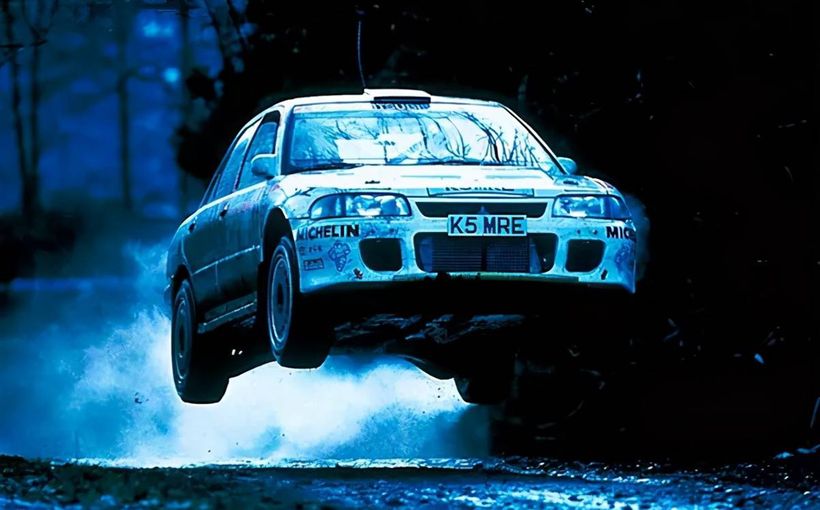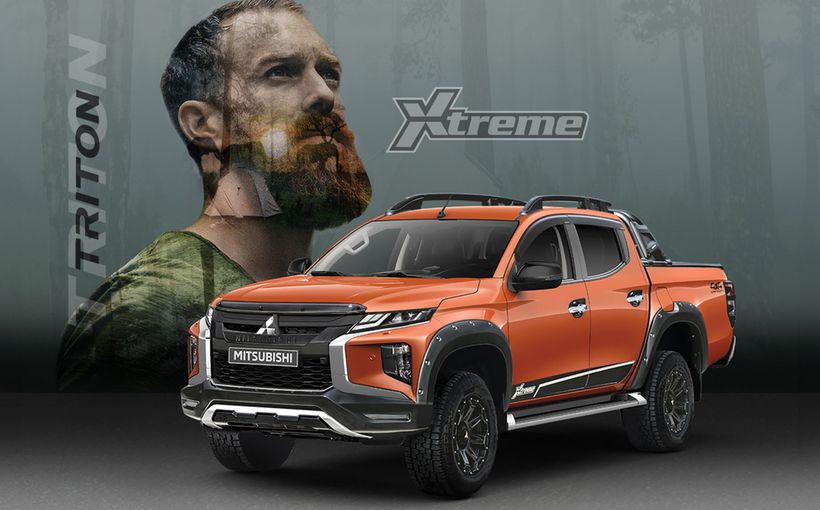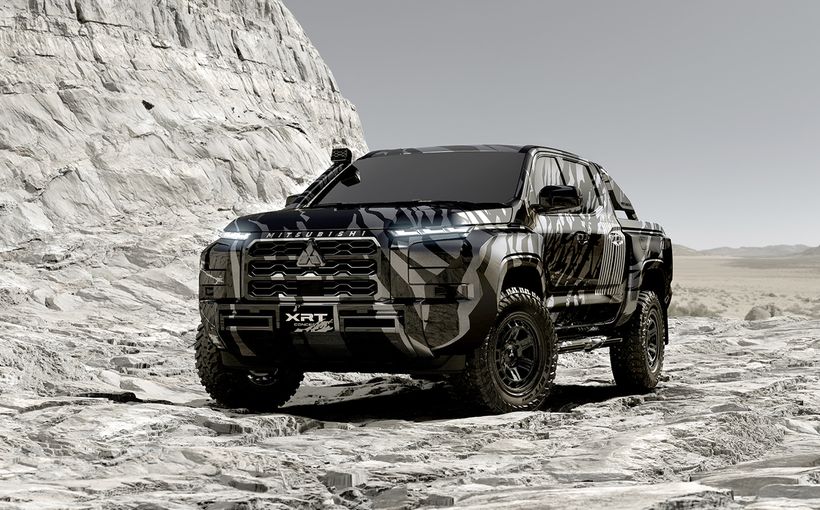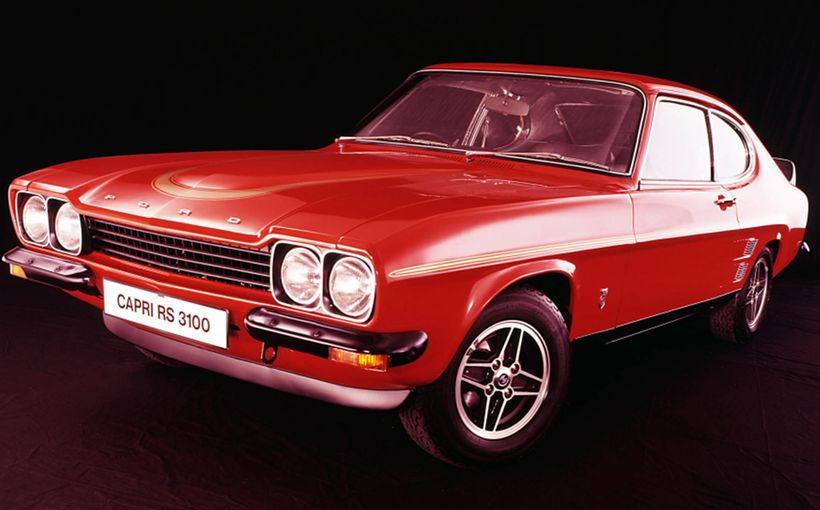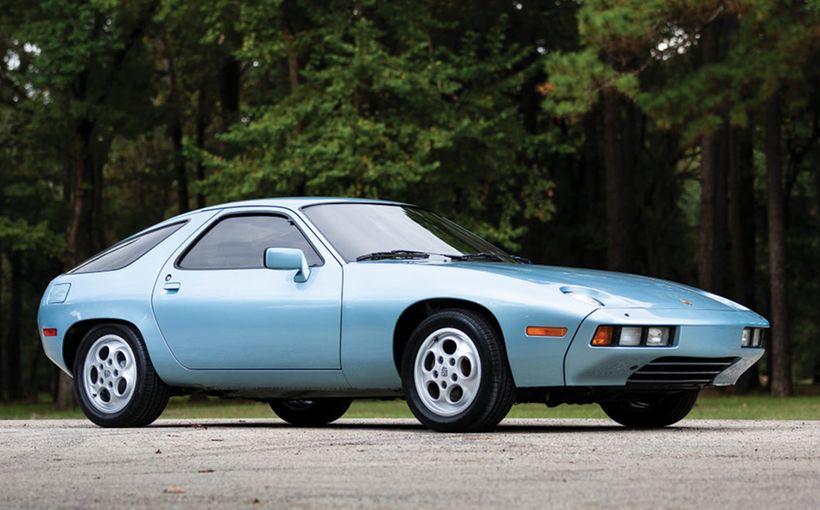Mitsubishi Galant and Lancer: Shining Stars of the Southern Cross

Mitsubishi was one of numerous Japanese car manufacturers to use motor sport as a marketing tool in the 1970s to build credibility and drive sales in major export markets. That included Australia, where it achieved unparalleled success in the nation’s most prestigious rally – the Southern Cross.
In a remarkable period of dominance, Mitsubishi and its star British driver Andrew Cowan won five consecutive events, starting in 1972 with the A50 Galant before claiming another four straight victories in the A73 Lancer 1600 GSR.
Those victories were of enormous importance to Mitsubishi, as the annual Southern Cross International was in close proximity to Japan yet attracted many of the world’s top rally drivers and factory teams. It was the perfect ‘local’ competitive proving ground for its products.
The Cross, which ran from 1966 to 1980, was to Australian rallying what the Bathurst 500/1000 was to circuit racing. From 1970 it was staged in the rugged forests surrounding Port Macquarie on the NSW mid-north coast. By the mid-1970s, with a total distance of around 3,400km over five gruelling days and four nights, its profile in Japan was enormous.

In Evan Green’s World of Motor Sport published in 1976, at the height of the Southern Cross’s standing on the world stage, he explained why this Australian rally was of paramount importance to Japanese car makers.
“The Cross has been an international contest from the outset…but the emphasis in recent years has moved to Japan, where factory and private interest has blossomed,” he wrote. “As the event has grown in recognition, so it seems to have become more severe. Just to finish has become something of an honour (Green was a skilled rally driver and regular competitor in the Cross).
"Tokyo television crews follow the rally and show their films on prime-time TV reaching an audience of 80 million viewers. Magazines devote dozens of pages to Southern Cross reports. Japanese tourists fly to Australia to see the action for themselves, while winning drivers who visit Japan are treated like pop stars.
"Of course, a principal reason for the high level of Japanese interest is that Japanese cars win the event. They have also scored in the Safari Rally of East Africa and as a result of those victories and the adventurous nature of both events, the Safari and the Southern Cross are regarded in Japan as the two most important events of the year.”

1972 Southern Cross
Mitsubishi had been active in Australian rallying since the 1960s with its distinctive Colt fastbacks, in which future multiple rally champion Colin Bond was talent-spotted by new HDT boss Harry Firth to drive for Holden.
The A50 Galant launched in 1969 provided a solid starting point for Mitsubishi’s Southern Cross dominance. As a result of Chrysler’s new commercial ties with the Japanese marque in 1971, the Galant was assembled by Chrysler Australia from 1972 and sold as the Valiant Galant.
Powered by Mitsubishi’s efficient and powerful SOHC ‘Saturn’ four cylinder engine, in capacities up to 1.6 litres, the Galant was a handsomely styled and compact sedan riding on a 2420mm wheelbase with a relatively light 885kg kerb weight.
It was conventional yet efficient in its design, with MacPherson strut front suspension, a leaf-spring live rear axle and front disc/rear drum brakes. Handling, particularly on loose surfaces, was vice-free and its inherent ruggedness proved to be an ideal rally platform.
Mitsubishi stepped up its commitment to winning the Southern Cross in 1971, with two works Galants for two-time Southern Cross winner Barry Ferguson and Kenya-based Safari winner Edgar Herrman, plus full service support by specialist mechanics flown in from Japan. The Galants performed admirably in their first Cross, finishing third and fourth behind the Torana GTR XU-1s of Stewart McLeod and winner Colin Bond.

The Mitsubishi attack was about to shift up a gear, though, thanks to one of the world’s greatest rally drivers. Scottish farmer Andrew Cowan, who first achieved global fame by winning the 1968 London to Sydney Marathon in a Hillman Hunter, won his first Southern Cross in 1969 driving a works-entered Austin 1800.
However, it was a chance meeting two years later at a barbeque following the 1971 Cross that the stars aligned, when Mitsubishi’s motor sport boss Yukamichi Katane approached Cowan to drive for the Japanese marque. It was the start of a relationship that would last for more than three decades and yield enormous success.
Cowan found himself behind the wheel of a works Colt Galant (aka Valiant Galant) alongside top navigator John Bryson for the 1972 Cross. It was one of four works cars, with the other three steered by talented Aussies - Doug Stewart, Barry Ferguson and versatile race and rally ace Doug Chivas. Two more were entered by the local Valiant Galant Rally Team headed by Bob Riley.
Arch rival Nissan also had works cars for Finnish star Rauno Aaltonen (Datsun 240Z) and Edgar Herrman (Datsun 180B SSS), while Renault Australia backed four Renault 12 Gordinis with a strong driver line-up headed by 1970 national rally champion Bob Watson.

The 1972 Cross was the hardest and most competitive to date, in a straight fight between multi-car Mitsubishi and Nissan teams. It was a gripping contest for the two Japanese marques, with the outright placings not decided until the last stages on the final night.
But it was Cowan, the master, who came out on top in his first Southern Cross in a Mitsubishi Galant, with a narrow hard-fought victory over Aaltonen’s 240Z. Cowan’s team-mate Chivas was the highest placed Aussie, claiming a sparkling third place ahead of Herrman’s Datsun and many local rally specialists.
Mitsubishi also trialled a 2.0 litre Galant GTO coupe in other local events at this time, but the company was setting its sights on an even smaller and lighter car than the Galant, which even Cowan had described as “quite a big saloon”. Its replacement – the Lancer - would bring unprecedented success in the prized Australian rally.

1973 Southern Cross
The first generation Lancer, the A70, entered production in February 1973. Although its basic design and mechanical menu were similar to the Galant, the Lancer’s 2340mm wheelbase was 80mm shorter, resulting in even sharper handling response and faster directional changes. It was also much lighter, with a kerb weight more than 100kg less than the Galant.
The hottest model in the Lancer line-up, which had ‘rally car’ written all over it, was the A73 1600 GSR. Its rugged 1.6 SOHC Saturn four, equipped with dual Mikuni-Solex side-draught carburettors, produced about 110bhp in standard trim but in full house rally specification that jumped to 170bhp at a screaming 7800rpm.
Sure, there were rivals with larger engine capacities and more power, but the Lancer’s diminutive size and light weight blessed it with an athletic power-to-weight ratio, ‘chuck-able’ handling and unmatched durability.
The Lancer made its international debut in the 1973 Southern Cross where it immediately proved to be an even more effective weapon than its predecessor. The huge 74-car entry promised another ferocious battle between Japanese car giants, with Mitsubishi and Nissan fronting with five cars each.

Leading the Lancer attack were reigning champs Andrew Cowan and John Bryson in a 1600 GSR, backed by similar cars for Kenya’s Joginder Singh (destined to make history in the East African Safari) and local talents Doug Chivas, Barry Ferguson and Doug Stewart.
Nissan’s line-up was equally star-studded with factory-prepped Datsun 240Zs for UK star Tony Fall and Uganda’s Shehkar Mehta plus Datsun 180B SSS coupes for Aussies Frank Kilfoyle, Jeff Beaumont and George Fury. Major local competition was expected to come from multiple Australian rally champ Colin Bond in an HDT Torana GTR XU-1, but he had to start dead last after a pre-event eligibility dispute with rally organisers.
The 1973 Cross was the wettest on record, with heavy rain falling before, during and after the event. Normally dusty forest roads became slippery mud tracks and shallow creek crossings were more like river crossings.

Even so, the rain could not dampen the performance of the new Lancer 1600 GSRs which thrived in the tricky conditions, finishing a resounding first, second, third and fourth! Cowan was again the winner, recording his second consecutive Cross win for Mitsubishi and his third overall.
Colin Bond in his Torana XU-1 staged a dazzling fightback from last place to finish fifth, beaten only by the Mitsubishi quartet. Nissan lost several of its top cars due to various mishaps, with Frank Kilfoyle being the highest placed Datsun driver in sixth place.
Cowan was mightily impressed by his new mount. In an interview with UK Motor Sport, he described the Lancer as “…a magical little car, much better than it looked on paper; getting into it was like putting on a favourite pair of shoes.”

1974 Southern Cross
The 64-car entry for the 1974 Cross showed how important the Cross had become to Japanese car makers, with factory teams representing Mitsubishi, Nissan and now Subaru. Three of the six works Lancer 1600 GSRs were those used in 1973, with the other three being new cars spread across a formidable driver line-up led by Cowan and navigator Bryson.
Joginder Singh, who earlier in the year had toppled Bjorn Waldegard and Porsche’s 911 to win the East African Safari in a self-built Lancer, was back for another crack at the Cross along with Mitsubishi team-mates Barry Ferguson, Doug Chivas, Doug Stewart and Japan’s first rally superstar Kenjiro Shinozuka.
Nissan returned with a vengeance, this time armed with its latest Datsun 710 SSS (not sold in Australia) with a potent 1.8 litre SOHC engine producing around 200bhp. Two of the new works cars were driven by Swedish star Harry Kallstrom and Australian rally champ Frank Kilfoyle, with a third semi-works 710 SSS for Yoshio Iwashita – one of an increasing number of Japanese drivers.

Fuji Heavy Industries also made its official Cross debut in 1974, with a four-car works team of Subaru 1.4 litre GSR coupes with a mix of Japanese and Australian crews. Renault Australia also entered a rapid Alpine A110 for Bob Watson but Holden and Colin Bond were noticeably absent after more eligibility issues, this time with the HDT’s new V8-powered Torana L34.
Despite a record overseas contingent, Cowan and his ‘magical’ Lancer 1600 GSR once again proved their dominance, outclassing all rivals for the third year in succession. It was also his fourth victory in the rally’s nine-year history, with many observers claiming the Scotsman and Mitsubishi had a mortgage on the Southern Cross.
Harry Kallstrom mounted a strong challenge for Nissan in the new 710 SSS, but with the event becoming increasingly severe on cars and crews only 10 of the original 64 entries started the final night - and only seven of those finished! Singh completed a classy 1-2 for Mitsubishi, with the highest placed Nissan entry being emerging local star George Fury in his Datsun 180B SSS.

1975 Southern Cross
Proof of the event’s growing international stature could be seen in the bumper 85-car entry, featuring 23 drivers and 14 navigators from overseas, with 14 cars entered by private Japanese crews alone.
The Japanese works and semi-works teams were back in force. Mitsubishi had four Lancer 1600 GSRs for reigning champion Cowan (with new Aussie navigator Fred Gocentas), Finnish superstar Hannu Mikkola and local top guns Barry Ferguson and Doug Stewart.
Never-say-die Nissan fronted with three of its rapid Datsun 710 SSS coupes for Finland’s Rauno Aaltonen, Sweden’s Harry Kallstrom and Australia’s fastest farmer George Fury. The 1.8 litre Datsuns reportedly had 30bhp more than the Lancers, but could not match Mitsubishi’s durability.
Fuji Heavy Industries ramped up its efforts for 1975 with five Subaru A22s fitted with larger 1.6 litre engines in place of the previous 1.4 litre units. Four of the five works cars had Japanese crews, with the other allocated to Aussie motoring journos James Laing-Peach and Barry Lake.

Ford Australia backed a single Mk 1 Escort RS2000 for Bob Watson and amongst the eight New Zealand crews were several Escort RS1600s and NZ rally champ Mike Marshall in the latest Mk2 RS1800.
The 1975 Cross was full of drama from start to finish, with the leaders setting a searing pace through the dusty forests. Aaltonen and Kallstrom were both early retirements due to engine failures in their Datsun 710s, but Mitsubishi also suffered a shock loss when Mikkola rolled his Lancer. Local hero George Fury in the sole surviving 710 was setting some staggeringly fast stage times, leaving his pursuers choking on dust until his Datsun also succumbed to engine failure.
So once again the combination of the Lancer’s faultless durability and Cowan’s skill (and uncanny luck!) resulted in another victory for the Scot, with Lancers filling three of the top four positions thanks to runner-up Ferguson and fourth-placed Stewart. Saving face for Datsun was Canberra young gun Greg Carr who with navigator Wayne Gregson split the Lancer trio by finishing third in their non-works 180B SSS prepared by ACT tuner Gerry Ball.

1976 Southern Cross
1976 was the pinnacle for international participation. 34 drivers and 41 of the 89 cars entered were from overseas, with crews representing 10 countries including the UK, Europe, New Zealand, New Caledonia and the Philippines. Japanese involvement reached a new high with no less than 20 non-works entries.
The incredible Andrew Cowan was back again in a Lancer 1600 GSR chasing a record five in a row for Mitsubishi. Works 1600 GSRs were also provided for Barry Ferguson and Doug Stewart. The Lancer’s global reputation as an unbreakable rally car was further enhanced in 1976, thanks to the remarkable Joginder Singh scoring his second East African Safari victory in three years.
In 1976 Cowan would face his toughest Southern Cross challenge from Nissan, with no less than five works Datsun 710 SSSs and a formidable international driver line-up including Sweden’s Kallstrom and Per-Inge Walfridson, Kenya’s Shekhar Mehta, Finland’s Rauno Aaltonen and Australia’s mercurial George Fury.
Further proof of the event’s international standing was a two-car team backed by Ford Australia, after dipping its toes the previous year. Two of the latest Mk 2 Escort RS1800 works cars, prepared by Ford’s competition department at Boreham in the UK, were flown in along with star drivers Timo Makinen from Finland and Britain’s Roger Clark.

Other works entries included Colin Bond in HDT’s powerful but cumbersome 5.0 litre V8-powered Torana L34, along with a 320 sedan entered by BMW Australia and crewed by Germany’s Achim Warmbold and France’s future world motor sport luminary Jean Todt.
Once again the ferociously fast pace set by the works teams ensured that many cars died on the Cross. Clark and Makinen led the early stages in their RS1800s before falling back during the first night, which also claimed Aaltonen’s Datsun 710 and Warmbold’s BMW. Fury again was the pace-setter in his 710 ahead of Cowan, the two Escorts and Ferguson’s Lancer.
Fury continued to defend his lead after the second night with unrelenting pressure from Cowan; Ferguson’s Lancer moving up to third ahead of Kallstrom’s Datsun. The works Ford challenge had collapsed; Makinen out with a blown diff and Clark battling rear-end damage.

The third night’s hostilities ended with Fury maintaining his lead, but the tenacious, relentless Cowan in his lesser-powered but more agile Lancer stayed right with him. The Scot was clearly relishing the fight, even giving Fury a friendly push-start when the Datsun’s starter motor failed.
Only 25 of the original 89 cars fronted for the final night, with all eyes focused on the showdown between Datsun and Mitsubishi. And what a gripping finale it was. Fury and Cowan traded fastest times for more than 600km, until Fury under immense pressure took a wrong turn and Cowan hit the lead. Fury’s fightback soon ended, though, with a shattered differential. His Datsun team-mate Kallstrom also retired with a blown engine.
So, incredibly, Cowan scored his fifth straight Southern Cross win and sixth in total. Ferguson’s second place and Stewart’s fourth ensured the Mitsubishi Lancer again claimed three of the top four places, with Mehta’s Datsun 710 in third.
On reflection, the A50 Galant and A73 Lancer 1600 GSR were clearly great rally cars and Mitsubishi’s preparation and event servicing were always second to none. However, a pivotal factor in their Southern Cross dominance was Andrew Cowan, the only international driver (apart from Rauno Aaltonen in 1977) to win the event.

“Cowan wins for reasons that have little to do with luck,” Evan Green concluded at the time. “To start with, he is a brilliant driver. Cowan, a farmer, doesn’t drive regularly in Britain and is vastly underrated in his own country, but he has pace, tenacity, endurance and absolute, unflagging concentration.
“With the Lancer he has had a perfect car for the Australian rally. It is not the fastest vehicle, but seems to be fast enough and is certainly stronger than its rivals. Cowan hammers the Lancer through creeks, ruts and over fallen logs because he knows it will absorb such punishment and keep going. Fred Gocentas stopped calling the hazard warnings in the route notes because Cowan kept accelerating when he did!”
Not surprisingly, Mitsubishi chose to bow out of its Southern Cross factory involvement on such a high note, having scored five consecutive wins from 1972 to 1976. Even so, non-works Galants and Lancers continued to be seen in the Cross and other Australian rallies for years to come, further enhancing their reputations as two of the toughest Japanese cars ever built.



